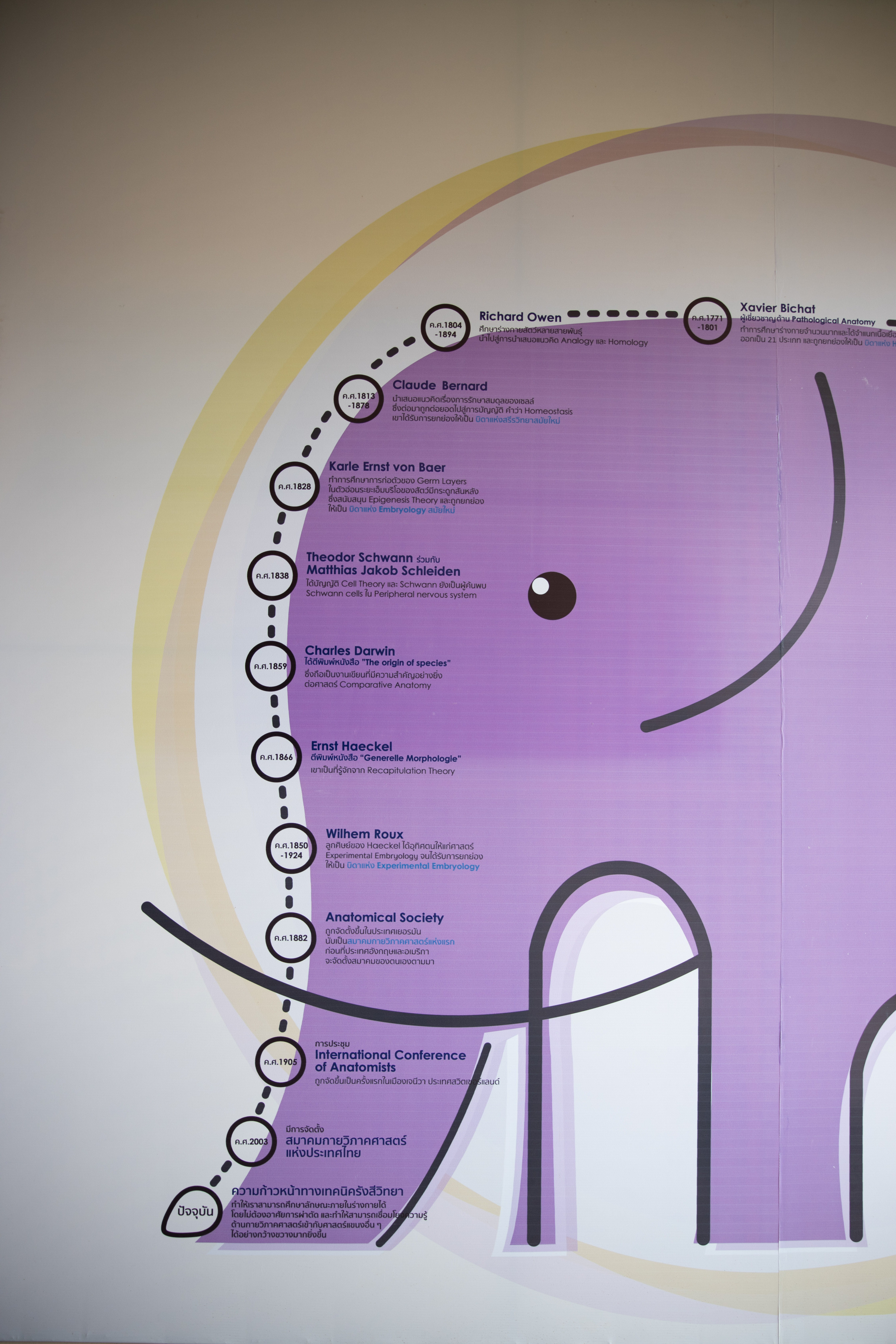
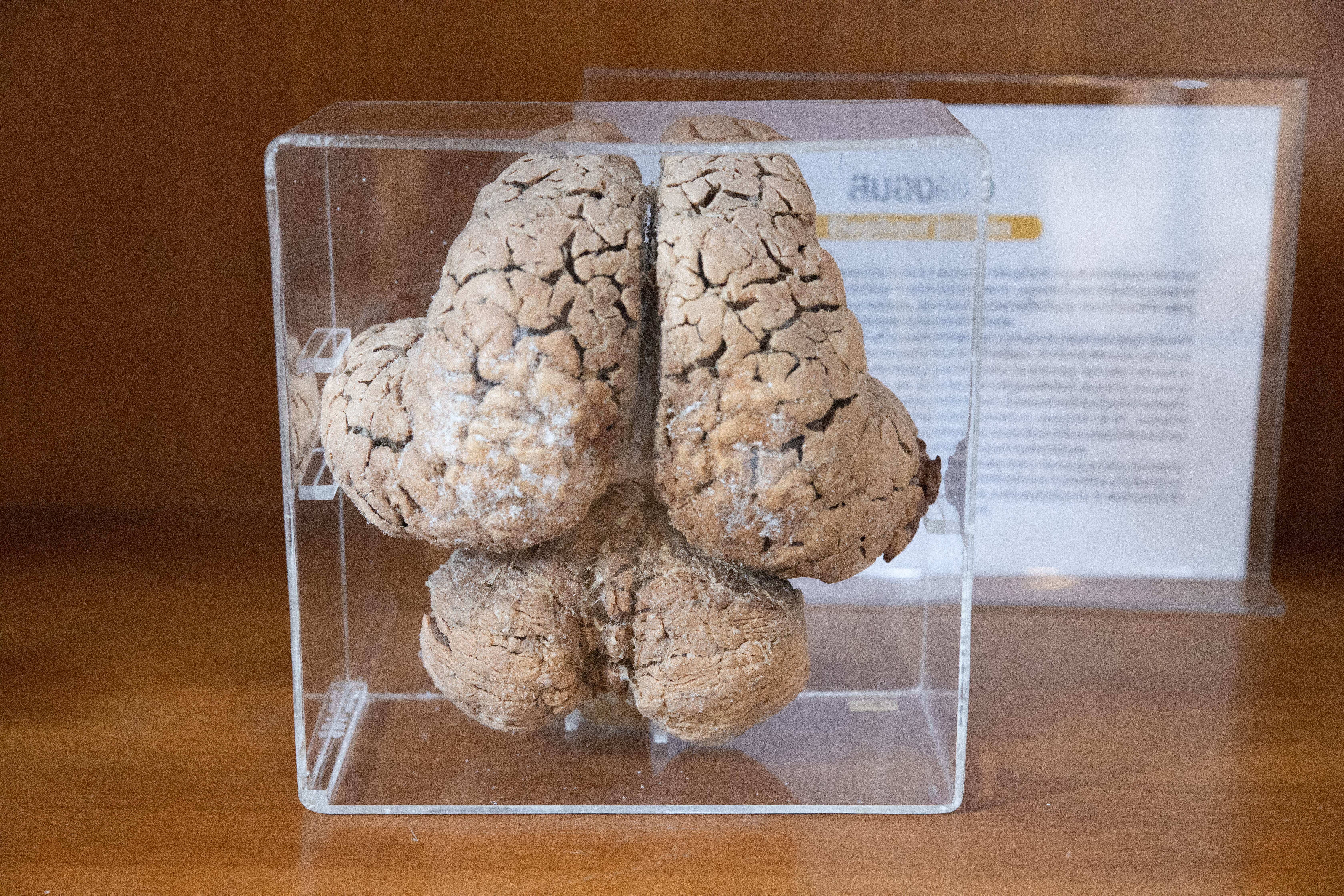
Plastination technique by the Chiang Mai University Faculty of MedicineChiang Mai University Faculty of Veterinary Medicine’s Center of Elephant and Wildlife Research’s ‘Elephant Work’
A little known fact is that while the elephant’s brain is tiny in comparison to its body, it is still the largest land mammal brain on the planet. This intelligence and all of its potential is the reason that Associate Professor Dr. Chatchote Thitaram of the Center of Elephant and Wildlife Research, Chiang Mai University, has spent two decades working with elephants.
Associate Professor Dr. Chatchote, by working closely with the university’s Faculty of Associated Medical Science, the Elephant Hospital, Thai Elephant Conservation Center and the Thai Elephant Alliance, is also the first group to have successfully used frozen elephant plasma in healing elephants, satisfactorily reducing mortality rates of elephants.
A little known fact: Chiang Mai is home to the majority of Thailand’s elephants
The Center of Elephant and Wildlife Research was specifically chosen to be located in Chiang Mai, simply because the province has the largest number of elephants in the kingdom. The Center, with funding from the university, focuses on research and development, education and the creation of educational tools and academic services such as mobile clinics. The Center is currently overseeing the wellbeing of 900 elephants across 80-90 elephant camps, with some in Chiang Rai and Mae Hong Son.
“We have a mobile clinic which visits various camps and communities such as those in Mae Chaem district, where there are still significant numbers of elephants living in a traditional way alongside villagers,” said Associate Professor Dr. Chatchote of the Center’s works. “Mostly we visit elephants working in the tourism industry and care for their health. Each case is different and some we have to send to the Elephant Hospital, where our team follows to assist in emergencies from breached births. As to our service works, we look at the overall health of entire herds, some camps have ten, 50 or even 70 elephants and we assist in planning for dietary requirements and breeding. One front we are working on is combatting the attacks from the west by disseminating correct information as to how well Thai elephants are cared for and ensuring standards are met.”
Academic services on the ground
Efforts to help birth Pang Chan Daeng
Pang Jan Daeng and Plai Boonphak working with Center of Elephant and Wildlife ResearchAssociate Professor Dr. Chatchote shared two case studies which showcase just some of the challenges the Center faces.
“In 2000 we heard of an elephant called Pung Chan Daeng who had an object sticking out of her rear. She had been pregnant the year before and her mahout had assumed that she had had a miscarriage when the due date was passed. It turns out that for one year she had been carrying her dead fetus and we had to remove it. On this operation at the Elephant Hospital, Thai Elephant Conservation Center, it took a team of 17 veterinarians and 40 mahouts to achieve as there were so many roles to play. One team was in charge of anesthetic, as it was too dangerous for Pung Chan Daeng to lie down, it was a fine balance between mild and total sedation. Another team monitored breathing and heart rates while another team used ropes, nets and pulleys to maintain her position. Then there was the surgery team which had to conduct the episiotomy, eventually pulling out the fetus. In order to maintain the safety of Pung Chan Daeng , this became a herculean effort, but she is safe and well today.”
“Another case study was of Plai Boonphak, an elephant which went for 21 days without eating or drinking, all the time excreting excessive drool. This operation, again, took place at the Elephant Hospital, Thai Elephant Conservation Center with the team of 20-30 veterinarians and 30-40 mahouts, who tried to mildly sedate her but eventually had to fully anesthetise him, which was a challenge as it takes a specialist to administer such a powerful medicine and when elephants fall, which is after 4-5 minutes, they can end up hitting the ground hard. We had to strategically place rubber tyres so that she fell safely. After putting an endoscope about three metres down her digestive system. We discovered a large chunk of sugarcane which had blocked her system. We tried to push and pull it but were unsuccessful.”
Plai Boon Phak getting anesthetised
‘It takes a village’ to help Plai Boon Phak
Associate Professor Dr. Chatchote explained that he had to elicit the support of the university’s Mechanical Engineering department to design a pair of long pincers, connected to the camera, to attempt the object’s removal. Working alongside teams from other elephant organizations, they had to, once again, plan, anesthetize and eventually operate on Plai Boonphak, successfully removing the obstruction.
“The teamwork required the seamless cooperation of many people. We had the team of anesthesiologists, a team to control the elephant, a planning and strategy team to oversee the entire operations, the endoscopic team, the medical team for post-operational recovery which also oversaw saline and supplements. Unfortunately, the first and second attempts failed, so the pincers had to be made stronger. Even still, only smaller pieces were removed, with the main chunk too stubborn to be safety extracted. We tried again, our third time, by only sedating the elephant, but it was too dangerous for everyone. So it wasn’t until our fourth attempt, again with a general anesthetic, that we succeeded. This one problem took 20 days to solve.”
Chiang Mai University Center of Elephant and Wildlife Research’s Dispersing of Knowledge
It is important for the Center’s research and academic services to be practically applied. To that end, the Center has reached out to communities and those working and living with elephants to pass on knowledge though students, camp personnel, organizing the salt lick youth camp, training for mahouts, courses for assistant vets and many other initiatives.
“In order to disseminate basic information, we start with the mahouts,” explained Associate Professor Dr. Chatchote. “More formal training then comes to the assistant veterinarians who tend to be a chosen chief mahout from each camp. This is important for minor injuries or illnesses such as eye infections, taking blood samples or checking hormones. It isn’t worth sending our team out for one or two hours’ drives for these minor requirements, so it helps to train one person per camp who can do these basic duties. We are always available on the phone to assist them through any procedures. Only for serious matters beyond the ability of those we have trained, do we then go out ourselves. Then there is the more rigorous training for veterinaries and academic researchers themselves. For this group, we have now held six international symposiums, inviting interested parties from all over the world to attend. Working alongside the Royal Veterinary College and Zoological Society London from the United Kingdom, the Smithsonian Conservation Biology Institute from the United States and University of Peradeniya from Sri Lanka on matters of overall elephant health. We also work with teams from Japan, Singapore, Sri Lanka, the United Kingdom, Germany, Netherlands and the United States to publish research findings and books. Not only that, we have now organized and hosted seven international level academic conferences on various elephant related matters.”
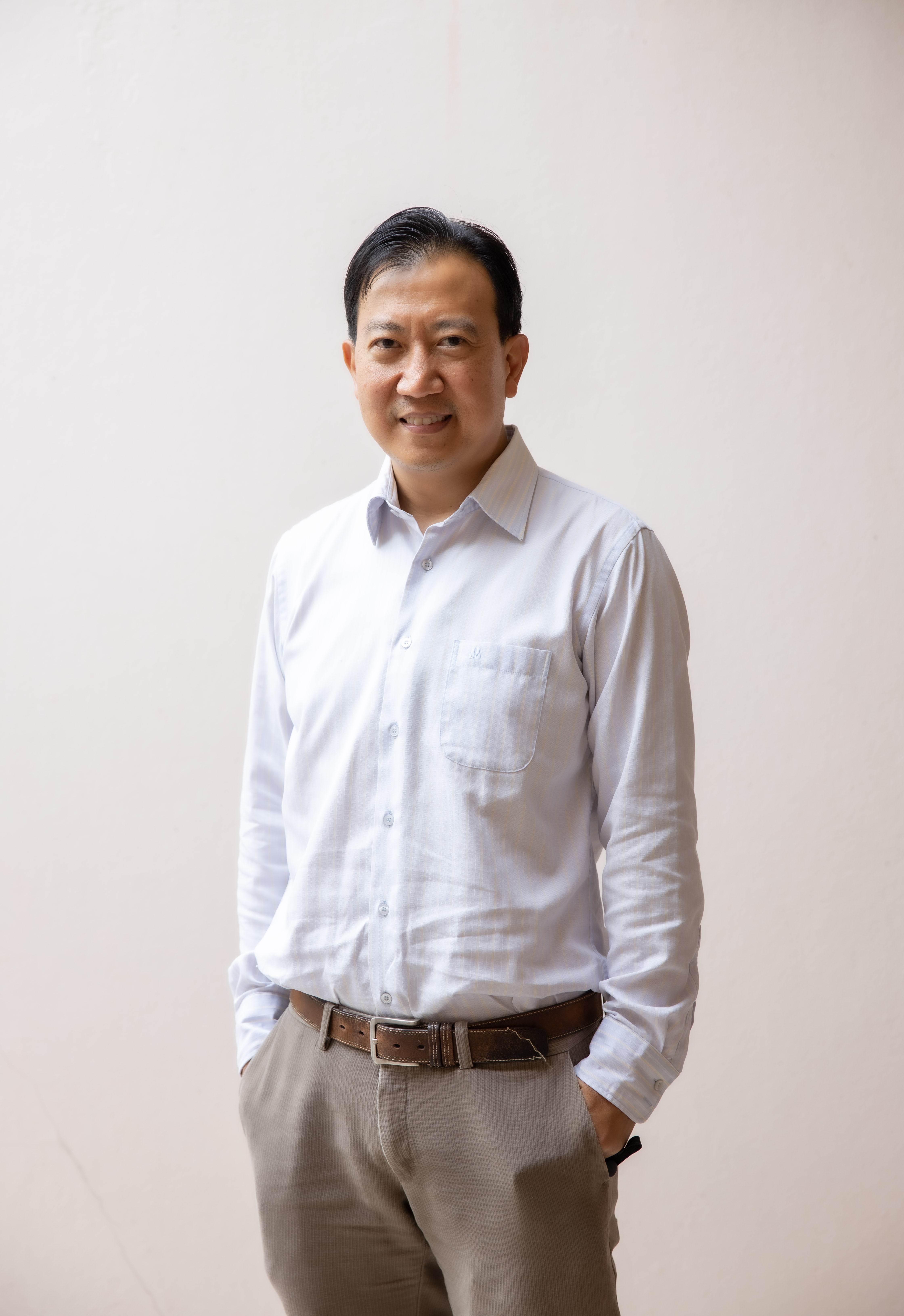
Associate Professor Dr. Chatchote Thitaram of the Center of Elephant and Wildlife Research, Chiang Mai University
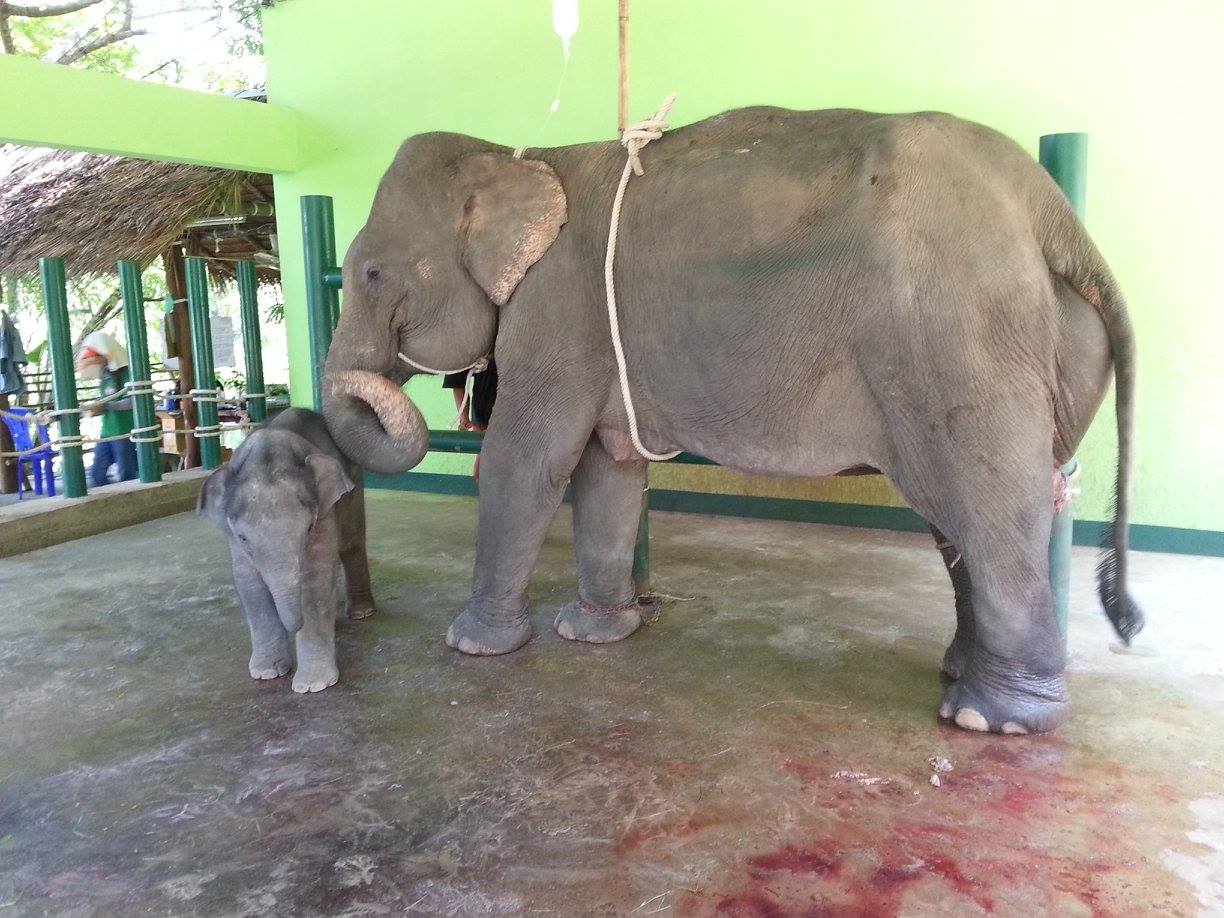
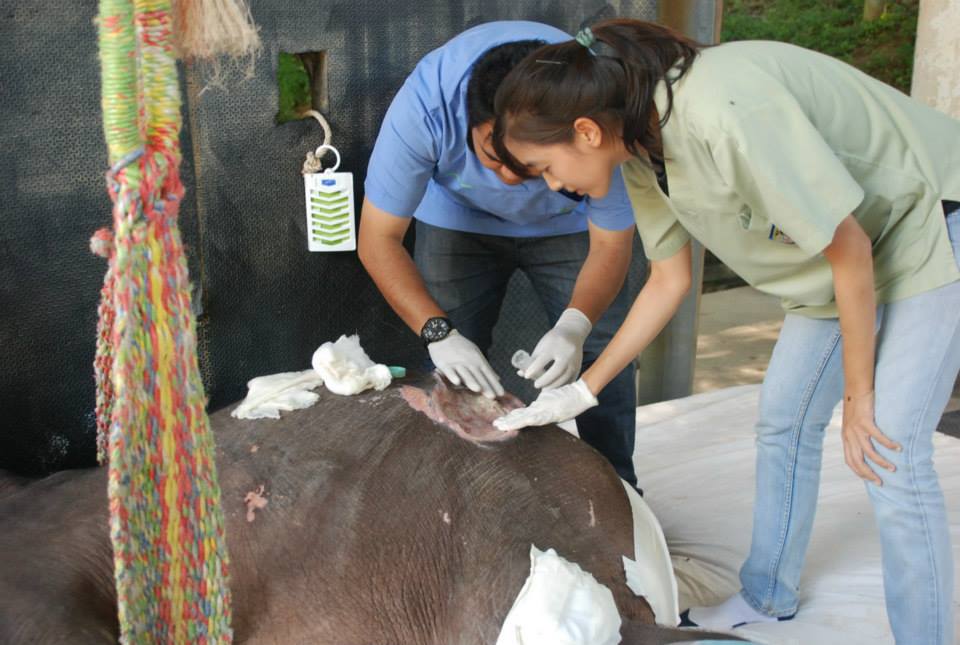
Helping Elephants with Frozen Plasma
One of greatest causes of mortality amongst infant elephants is the elephant herpes (Elephant Endotheliotropic Herpes Virus) which is a hemorrhagic disease which can cause death within 48-72 hours following the first symptoms in an infant elephant. While curable, this has been a leading cause of death in young Asian elephants, often due to time constraints following delayed diagnoses and travel time required by the medical team to reach the patient.
The elephant plasma research, conducted by Associate Professor Dr. Chatchote Thitaram, Assistant Professor Dr. Weerapongse Tangjitjaroen, Dr. Pakkanut Bansiddhi and Dr. Kajornpat Boonprasert of Chiang Mai University’s Faculty of Veterinary Medicine alongside Associate Professor Dr. Preeyanat Vongchan from Chiang Mai University’s Faculty f Associated Medical Sciences, Thai Elephant Conservation Centre and the Thai Elephant Alliance and various elephant camps across Chiang Mai, has revealed that the exchange of protein- and immunity-rich plasma can be critical to the survival of an infected infant.
Red blood cells pre-separated through a centrifuge
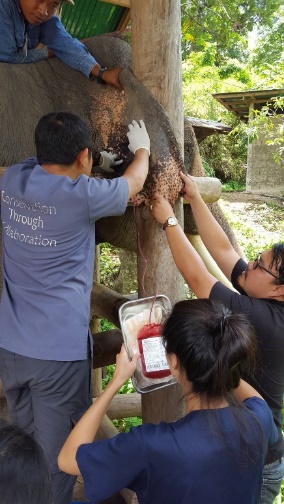
“The use of plasma exchange has a long and successful record in humans,” explained Associate Professor Dr. Chatchote. “Our own faculty has also been freezing and using plasma for a while, so we decided to develop it for elephants; the entire process one or two years.”
“We discovered that because of the heavy hemorrhaging of blood caused by the virus, infant elephants died through heart failure. To save them, they need blood. But in order to conduct cross-matching of blood we need to test many elephants as well as to check the blood for any other communicable diseases or other aberrations, a process which in itself takes one to two days, closing the window for any chance of survival after the first symptoms become evident. By creating a carefully categorized frozen plasma bank, all of which has had red blood cells pre-separated through a centrifuge, this emergency blood bank has already saved many infant elephant lives. The plasma lasts for one year in storage and can be used immediately when required.”
Associate Professor Dr. Chatchote told of a case of a young elephant from Mae Taeng district whose face had bloated up, its tongue had turned purple and it was listless, refusing to eat, as well as had a high temperature. “We were pretty sure that it had the virus, but had to take its blood to confirm. Once confirmed we gave it anti-viral medicine and melted frozen plasma to transfuse into the elephant, saving its life. The secret is in a fast diagnosis followed by fast treatment.”
‘Elephant Work’: The successful cooperation between humans and elephants
While working in the best interest of elephants, not all elephants are prime candidates for cooperation. It is important to select mild-mannered elephants with which to conduct research.
“In the past it wasn’t always easy to find an elephant blood donor as we had to know that the elephant was in the full bloom of health,” continued Associate Professor Dr. Chatchote. “It had to be free of any transmission diseases and had to be even tempered, as there is always risk to humans when working with such a huge and powerful animal. The process of collecting the plasma is also not easy as while it only takes 5-10 minutes to extract the blood (versus the typical 15 minutes for humans) due to the size of the blood vessels, the work must be done cleanly and efficiently. When operating on a human, it is typical to require 2-3 bags of blood; elephants require 10-20. The needles are also necessary larger, so when extracting from one spot then removing the needle to draw blood from another spot, it needs to be fast and strategic. Each successful extraction produces around 20 bags of blood.”
Frozen plasma isn’t just used for elephant herpes, but also to give strength to elephants who may have not eaten or drunk water for over 20 days or to restore mother elephants following a difficult birth, etc. This research is expected to be applied worldwide to save numerous elephant lives. The university is considering creating a frozen plasma bank to respond to elephant needs across the nation. This success is only possible through the cooperation of humans and elephants.
The Center of Elephant and Wildlife Research has come a long way, and has quite a journey to continue. But it is, day by day, year by year, improving the general wellbeing of Thailand’s elephants which will aid in the sustainability of the species. Starting with individual care, then tending to the herd, the Center now oversees the wellbeing of elephants all over Thailand.
Research is being published, guide books disseminated, standards for elephants and mahouts set, and laws created in order for our elephants to live healthy, long and sustainably alongside us all.